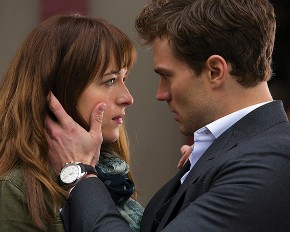Domination system

The novel Fifty Shades of Grey, by E. L. James, was not a good book, and the film is even worse. The story centers on an ordinary young woman, Anastasia Steele (Dakota Johnson), who is drawn to the mysterious and intimidating Christian Grey (Jamie Dornan). The central question is whether Anastasia will sign a contract to enter into a sadistic, controlling sexual relationship with Christian.
In an early scene in the book, Ana whispers to Christian, “Is this what our, er . . . relationship will be like . . . You ordering me around?” Christian replies, “And what’s more, you’ll want me to.”
The relationship between Christian and Anastasia is predicated on exaggerated inequality: Christian is a billionaire, Ana works in a hardware store. Christian is experienced sexually, Ana is not. He declares himself “incapable” of leaving her alone and begins to stalk her, showing up at her work, her home, and on her cross-country vacation. In one scene he breaks into her home, ties her to her bed, and rapes her.




